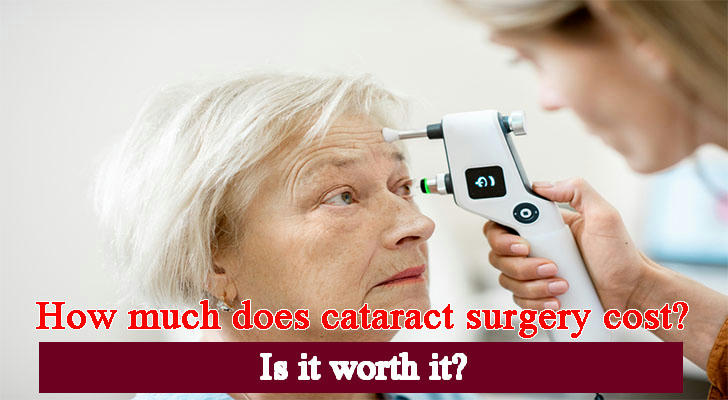Affordable Cataract Surgery Guide for Seniors in the U.S.: Costs, Benefits & How to Find the Best Deals
Struggling with blurry vision due to cataracts? For seniors in the U.S., finding affordable, safe cataract surgery with transparent pricing and available benefits is essential. This guide helps you access the lowest reasonable costs, maximize Medicare coverage, and locate trusted providers—helping you regain clear vision without overspending.

Key Facts at a Glance
- Cataracts are extremely common among older adults; over half of Americans aged 80 and above have or will develop cataracts.
- Even with Medicare or private insurance covering basic surgery, out-of-pocket expenses may include copays, deductibles, and extra fees for premium lenses or refractive upgrades.
- Premium intraocular lenses (IOLs) often add thousands of dollars per eye to the total cost.
Typical Cataract Surgery Costs, Safety, and Recovery by Age Group
| Age Group | Typical Price Range (per eye)* | Surgery Safety | Recovery |
|---|---|---|---|
| 50-59 years | $2,800 - $4,200 (uninsured), $400 - $1,200 (with insurance) | Success rate above 99%, very low complication risk | Quick recovery, significant vision improvement within 1 week |
| 60-69 years | $3,000 - $4,500 (uninsured), $500 - $1,500 (with insurance) | Success rate above 98%, low complication risk | Recovery in 1-2 weeks, noticeable vision gain |
| 70-79 years | $3,200 - $4,800 (uninsured), $600 - $1,800 (with insurance) | Success rate around 98%, slightly higher risk for retinal or other complications | Recovery about 2 weeks, most resume normal activities |
| 80+ years | $3,500 - $5,000 (uninsured), $700 - $2,000 (with insurance) | Success rate 96%-97%, requires monitoring of heart, diabetes conditions | Recovery may take 2-3 weeks, overall vision improves significantly |
*Prices vary by state, hospital, surgical method, and lens choice based on 2025 U.S. healthcare data.
Available Benefits, Discounts, and Savings for Seniors
- Medicare Part B – Covers basic cataract surgery and standard monofocal IOLs; premium lenses and refractive upgrades usually require additional payment.
- Private Insurance Plans – Most commercial plans partially cover surgery costs depending on policy terms.
- Senior Discounts – Some hospitals and eye centers offer reduced pricing for patients aged 65 and older.
- Charitable Medical Programs – Nonprofit organizations collaborate with surgeons to provide low-cost surgeries for low-income seniors.
- Payment Plans and No-Interest Loans – Many providers offer 6-24 month no-interest payment options to ease upfront expenses.
Where to Find the Most Affordable Cataract Surgery
- States with Lower Prices: Texas, Florida, Arizona, and Oklahoma tend to offer more competitive pricing due to higher provider competition and lower labor costs.
- Teaching Hospitals: University-affiliated hospitals often have lower rates than private clinics, with expert supervision.
- Chain Eye Centers: Large national eye care chains benefit from economies of scale, lowering patient costs.
- Charity Clinics: Nonprofit medical centers occasionally provide discounted or reduced-fee surgeries during specific campaigns.
How to Locate the Cheapest Cataract Surgery Options
- Compare Multiple Providers – Use keywords like cataract surgery cost and cheap cataract surgery nearby to research and compare local pricing.
- Confirm Insurance Coverage Details – Understand copays, deductibles, and non-covered services to avoid unexpected costs.
- Inquire About Seasonal Discounts – Some facilities offer promotions during off-peak times.
- Consider Traveling for Surgery – Getting surgery in a lower-cost state might reduce total expenses despite travel costs.
- Negotiate Package Deals – Ask if clinics offer bundled pricing for surgery plus premium lens implants.
Safety and Best Practices
- Choose certified ophthalmologists with proven cataract surgery experience.
- Complete a thorough pre-surgical health assessment to ensure medical readiness.
- Follow all post-operative care instructions closely, including timely medication use and follow-ups.
- Avoid strenuous activities or heavy lifting during the initial recovery period to protect the surgical site.
- Premium lenses can reduce reliance on glasses but should be selected based on personal health and financial considerations.
Conclusion
Cataract surgery is a vital step for seniors seeking to restore clear vision and improve quality of life. Understanding age-specific cost ranges, maximizing available benefits, and researching affordable local options empower patients to secure safe, effective surgery at a reasonable price. With careful planning, seniors can regain vision clarity while managing medical expenses efficiently.
